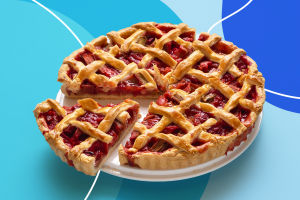Mousse cake has emerged as a beloved dessert in the culinary world, capturing the hearts and taste buds of people across the globe.
Its rise in popularity can be attributed to a blend of its luxurious texture, versatility, and the growing appreciation for sophisticated yet approachable desserts.
Let's delve into why mousse cake has become a favorite among dessert enthusiasts and how it has evolved over time.
A Luxurious Texture
At the heart of mousse cake's appeal is its unparalleled texture. The word "mousse" itself is French for "foam," which hints at the dessert's light, airy consistency. Mousse cakes are crafted from a blend of whipped cream, eggs, and flavorings, creating a smooth, creamy, and velvety texture that practically melts in your mouth. This luxurious mouthfeel is achieved through the incorporation of air into the mixture, resulting in a dessert that is both light and indulgent.
Versatility in Flavors
One of the reasons mousse cake has gained such widespread popularity is its versatility. Mousse cakes can be flavored with a wide range of ingredients, from classic chocolate and vanilla to exotic fruits like passion fruit and mango. This flexibility allows pastry chefs to experiment with different flavor combinations and create unique, personalized desserts. Additionally, mousse cakes can be paired with various textures and elements, such as crunchy bases, fruit coulis, or chocolate ganache, further enhancing their appeal.
Visual Appeal
In addition to its delightful taste and texture, mousse cake is visually stunning. The dessert often features a smooth, glossy finish that can be decorated with fresh fruit, edible flowers, or chocolate shards. The presentation of mousse cake is almost as important as its taste, as it adds an element of elegance and sophistication. This visual appeal makes mousse cake a popular choice for special occasions, celebrations, and upscale dining experiences.
The Evolution of Mousse Cake
Mousse cake has come a long way from its humble beginnings. Originating in France, the mousse dessert itself dates back to the 18th century. Early versions of mousse were savory rather than sweet, but by the 19th century, the dessert began to evolve into the sweet, airy treat we recognize today.
The mousse cake as you know it began to gain prominence in the late 20th century, as culinary trends shifted towards lighter, more refined desserts. With the rise of celebrity chefs and cooking shows, mousse cake became a symbol of sophisticated, modern baking. Its popularity was further fueled by its appearance in high-end patisseries and its frequent feature in dessert menus at fine dining establishments.
Global Appeal
Mousse cake's popularity extends beyond France, finding a place in dessert menus around the world. In Japan, for example, mousse cakes are often made with matcha or yuzu, reflecting the country's unique flavors and preferences. In the United States, mousse cakes are a staple at upscale bakeries and restaurants, often showcasing bold flavors and artistic designs.
The global appeal of mousse cake can also be attributed to its adaptability. While traditional mousse cakes are often crafted using classic French techniques, modern variations incorporate elements from various culinary traditions. This fusion of flavors and techniques has contributed to mousse cake's widespread popularity and enduring appeal.
The Rise of Home Baking
In recent years, there has been a surge in home baking, driven by social media and a desire for personalized, homemade treats. Mousse cake has become a popular choice for home bakers looking to impress their friends and family with a sophisticated dessert. With a wide range of recipes and tutorials available online, aspiring bakers can now recreate restaurant-quality mousse cakes in their own kitchens.
Health-Conscious Adaptations
As dietary preferences and health-consciousness continue to evolve, mousse cake has adapted to meet these demands. There are now numerous variations of mousse cake that cater to different dietary needs, including gluten-free, dairy-free, and low-sugar options. These adaptations ensure that mousse cake remains accessible and enjoyable for a diverse range of people, further contributing to its widespread popularity.
Mousse cake's popularity can be attributed to its luxurious texture, versatility, and visual appeal. Its evolution from a classic French dessert to a global favorite highlights its ability to adapt to changing tastes and trends. Whether enjoyed at a high-end restaurant, a celebratory occasion, or crafted at home, mousse cake continues to captivate dessert lovers with its indulgent flavor and elegant presentation. As culinary trends continue to evolve, one thing is certain: mousse cake will remain a cherished and delectable treat for years to come.


